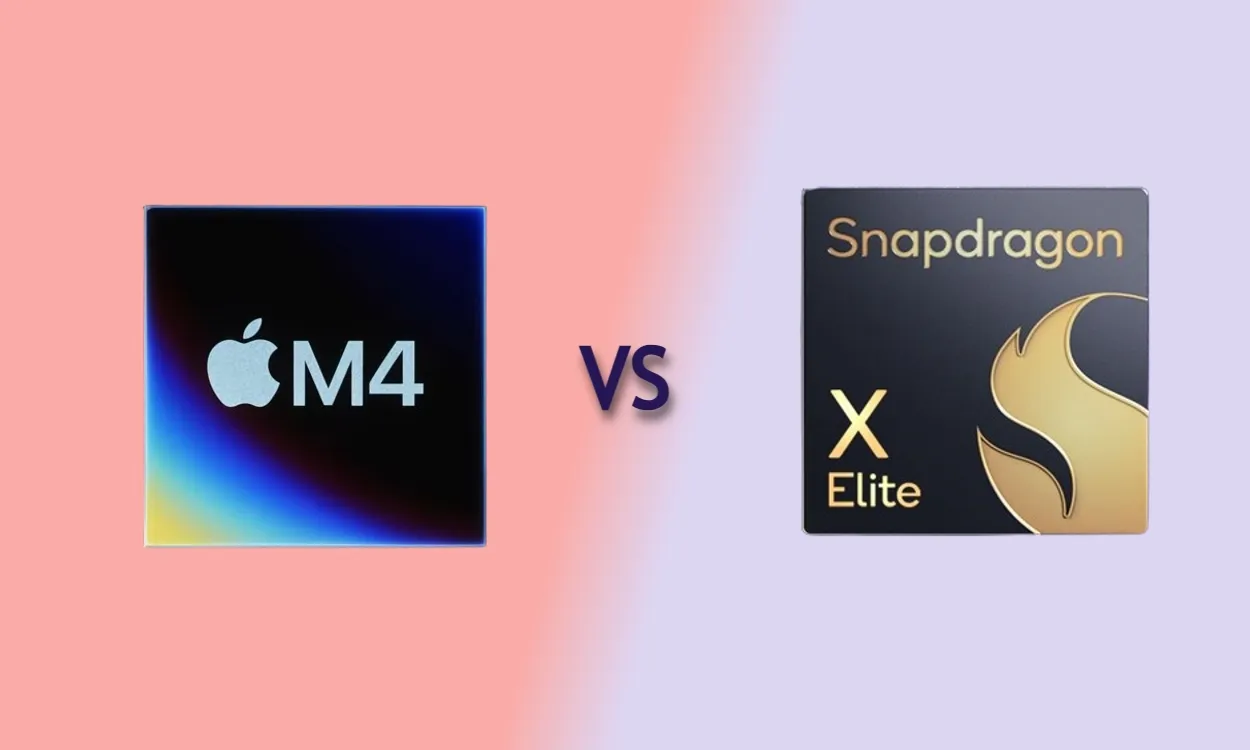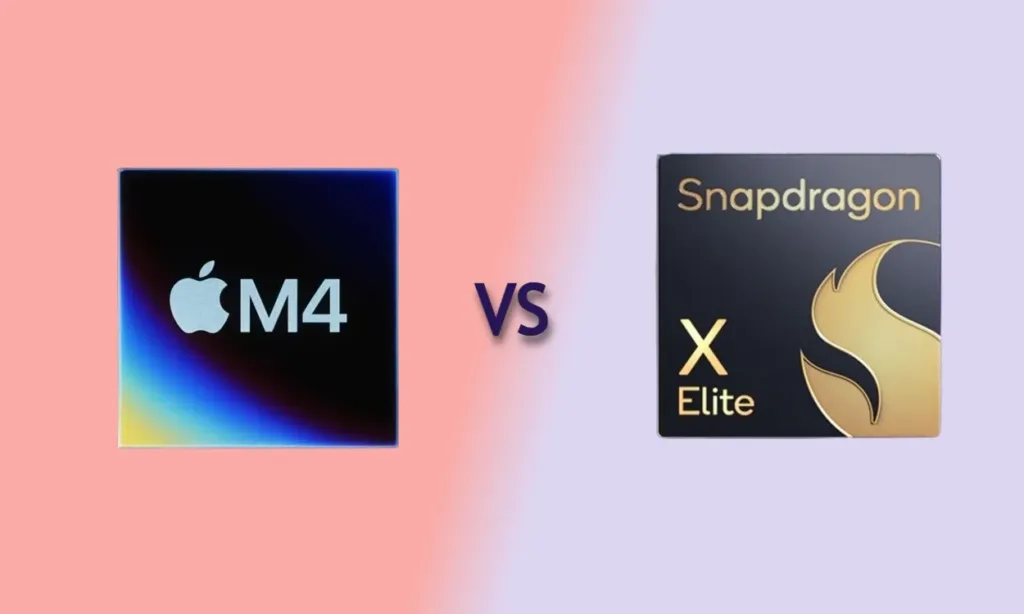
Apple has once again outpaced Qualcomm by unveiling its latest silicon, the Apple M4, ahead of the Snapdragon X Elite’s debut. The new Apple M4 chipset made its debut with the OLED iPad Pro. However, our focus is on comparing the Apple M4 chipset with the upcoming Snapdragon X Elite processor for Windows PCs. In this article, I delve into their CPU, GPU, and NPU/Neural Engine to determine which chipset leads the consumer market. Let’s dive in.
Apple M4 vs Snapdragon X Elite: Specs Difference
Take a quick look at the specs comparison between the Apple M4 and Snapdragon X Elite to understand the differences between these two chipsets.

Apple M4 vs Snapdragon X Elite: CPU
Apple has introduced the M4 chipset with the iPad Pro (2024), currently offering only two variants: one with 9 CPU cores and another with 10 CPU cores. The M4 is built on TSMC’s 2nd-gen 3nm (N3E) process node, promising better performance and efficiency. It’s also the first consumer chip developed on the N3E node.
The first variant of the M4 features 3 performance and 6 efficiency cores, while the second variant includes 4 performance and 6 efficiency cores. The maximum clock speed of the Apple M4’s CPU is 3.93GHz, slightly lower than the M3’s 4.05GHz maximum frequency.
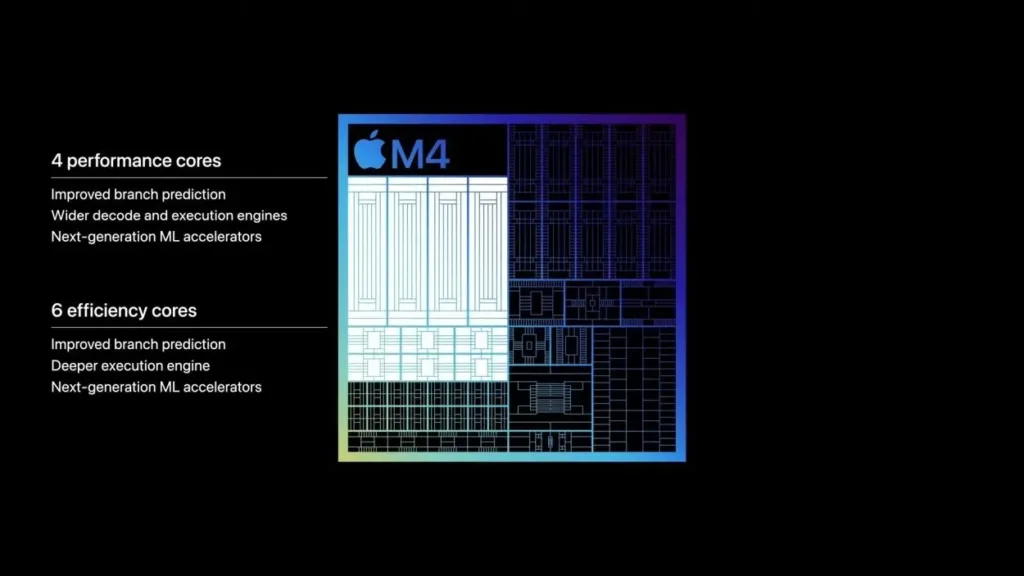
The Snapdragon X Elite is available in four different variants, with three featuring 12 CPU cores and one with 10 CPU cores, known as the Snapdragon X Plus. Qualcomm’s PC chip is manufactured on TSMC’s mature 4nm process node. While its peak frequency can reach up to 3.8GHz, which is lower than the Apple M4’s maximum clock speed, Qualcomm offers a dual-core boost of up to 4.2GHz on the top-end variant.
Comparing the Snapdragon X Plus with the base Apple M4 (both having 10 CPU cores), the former delivers a peak frequency of up to 3.4GHz without the benefit of dual-core boost to enhance its processing speed. In contrast, the Apple M4 can achieve top clock speeds of up to 3.93GHz, significantly widening the frequency gap by 500MHz.
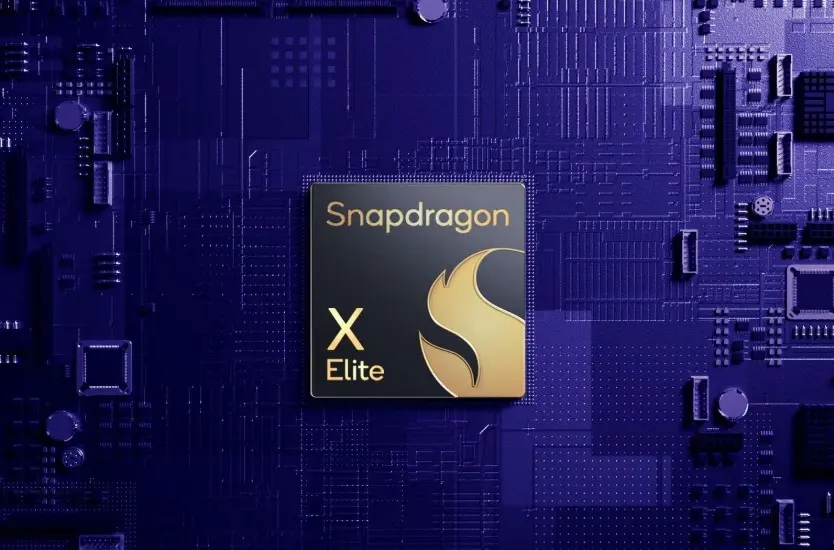
While we currently lack the Geekbench score for the Apple M4, it appears that the chipset should surpass the Snapdragon X Elite in the single-core test, potentially exceeding the 3,000 mark. Despite running at 4.2GHz, the top-end variant of the Snapdragon X Elite has not been able to exceed the 3,000 mark on the Geekbench single-core test. Last year’s Apple M3 outperforms the X Elite while running at 3.7GHz.
However, in multi-core tasks, the Snapdragon X Elite may outperform the Apple M4. Qualcomm has incorporated more performance cores than Apple (6P vs. 4P), which could enhance performance in multi-threaded tasks. It’s important to note that running various benchmark tests on the Apple M4 is necessary to reach a conclusive judgment.
For now, it appears that both chipsets are capable and rivals. However, in terms of performance-per-watt, Apple still holds the lead, likely due to the improved N3E process node.
Apple M4 vs Snapdragon X Elite: GPU
In terms of GPU, Apple has expanded upon the next-generation GPU architecture introduced with the M3 family last year. The Apple M4 is equipped with 10 GPU cores and incorporates flagship features such as hardware-accelerated Ray Tracing and Mesh Shading to deliver a rich gaming experience. Additionally, it supports dynamic caching for improved GPU utilization.
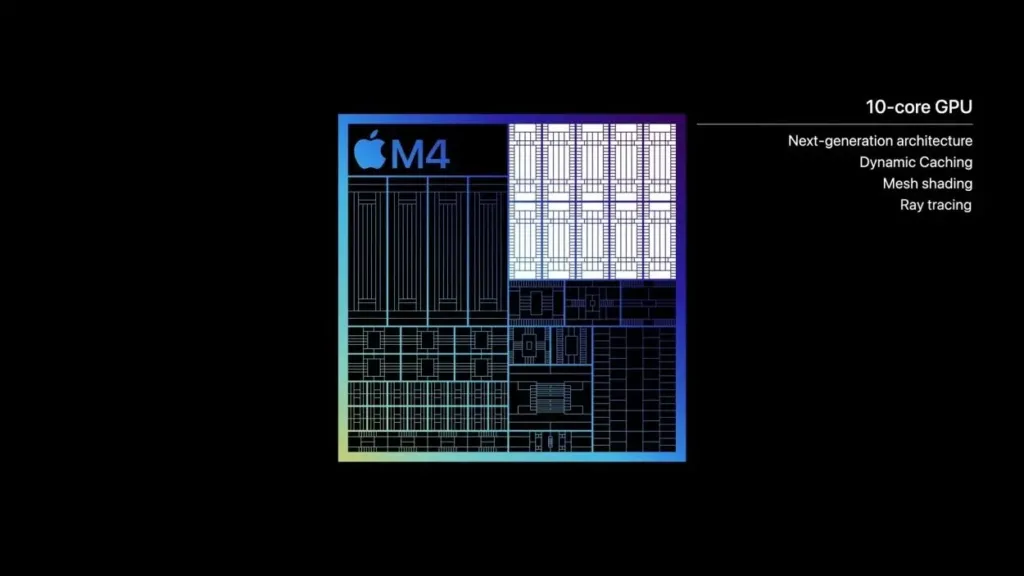
In contrast, the Adreno GPU on the Snapdragon X Elite is reported to feature just 6 GPU cores, making it significantly weaker compared to Apple’s M-series GPUs. The Adreno GPU also lacks hardware-accelerated Ray Tracing.
Qualcomm claims that its Adreno GPU can achieve up to 4.6 TFLOPS on the top-end X Elite variant. While Apple has not disclosed the figure for the M4 GPU, the older M2 GPU (with 10 cores) can deliver up to 3.6 TFLOPS. Apple states that the new M4 GPU is nearly 4 times more powerful than the M2 GPU, as highlighted in our comparison between the Apple M4 and M2.
This significant improvement may not be fully reflected in compute scores, but Apple’s GPU on the M4 is indeed a powerhouse, and Qualcomm needs to enhance its GPU performance to compete effectively.
Apple M4 vs Snapdragon X Elite: NPU
Moving on to the NPU, or what Apple refers to as the Neural Engine, the M4 is equipped with 16 cores and can perform up to 38 trillion operations per second (TOPS). In comparison, the Hexagon NPU on the Snapdragon X Elite can deliver up to 45 TOPS, indicating that Qualcomm holds the advantage in AI compute.

However, the TOPS figure can be misleading if we do not consider the type of operations and precision involved. Qualcomm’s 45 TOPS figure is based on INT8 (8-bit integer operations), and similarly, Apple’s 38 TOPS figure is also based on INT8, as confirmed by Ben Bajarin. This means that Qualcomm has indeed surpassed Apple in the AI compute race.
Apart from hardware capabilities, it’s important to note that software optimization and memory bandwidth play a crucial role in fully utilizing the NPU. Apple has developed its MLX framework and CoreML for Apple Silicon to leverage its Neural Engine, which is widely used by developers. On the other hand, Qualcomm is focusing on its AI Stack but requires more support and optimization after the X Elite’s debut.
Apple M4 vs Snapdragon X Elite: Memory Bandwidth
The base Apple M4 features a memory bandwidth of 120 GBps, while the Snapdragon X Elite supports LPDDR5X memory, capable of delivering speeds up to 135 GBps. Although the upcoming M4 Pro, Max, and Ultra variants are expected to offer better speeds, comparing the base variants shows that the Snapdragon X Elite offers slightly better memory speeds.

In addition, Apple has integrated hardware-accelerated AV1 decode support into the M4’s Media Engine, although it currently lacks AV1 encoding capabilities. In contrast, Qualcomm has included both AV1 encoding and decoding on the Snapdragon X Elite. This video codec is known for its efficient power consumption when watching high-resolution videos.
The Verdict
Apple strategically chose to release its M4 chipset just before the scheduled debut of the Snapdragon X Elite on May 20. This move is perceived as Apple’s effort to maintain its lead in consumer chipsets, surpassing competitors like Qualcomm, as well as x86 players such as Intel and AMD.
Based on the specifications on paper, the Apple M4 does appear to lead in both CPU and GPU performance. While the Snapdragon X Elite presents a strong challenge, it still lags behind the Apple M3 and M4 by a noticeable margin. However, in the NPU department, the Snapdragon X Elite demonstrates significant strength.
To accurately gauge the performance gap between the two chipsets, it will be necessary to conduct various benchmark tests. In the meantime, what are your thoughts on Qualcomm’s challenge to Apple? Share your opinions in the comments below.
